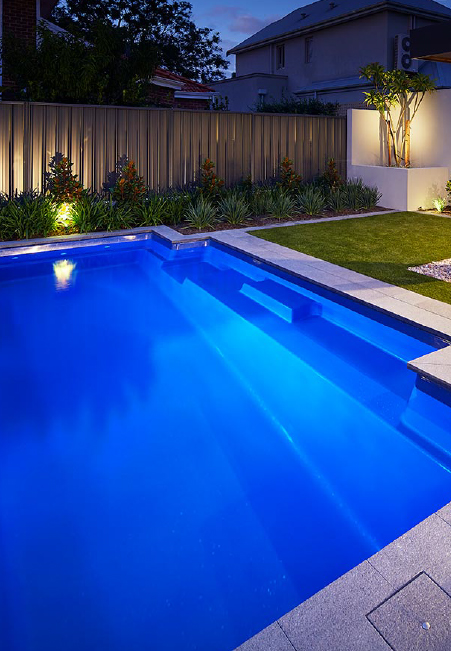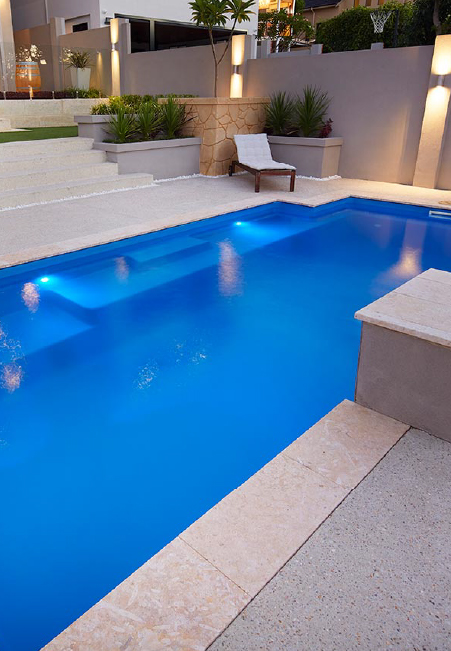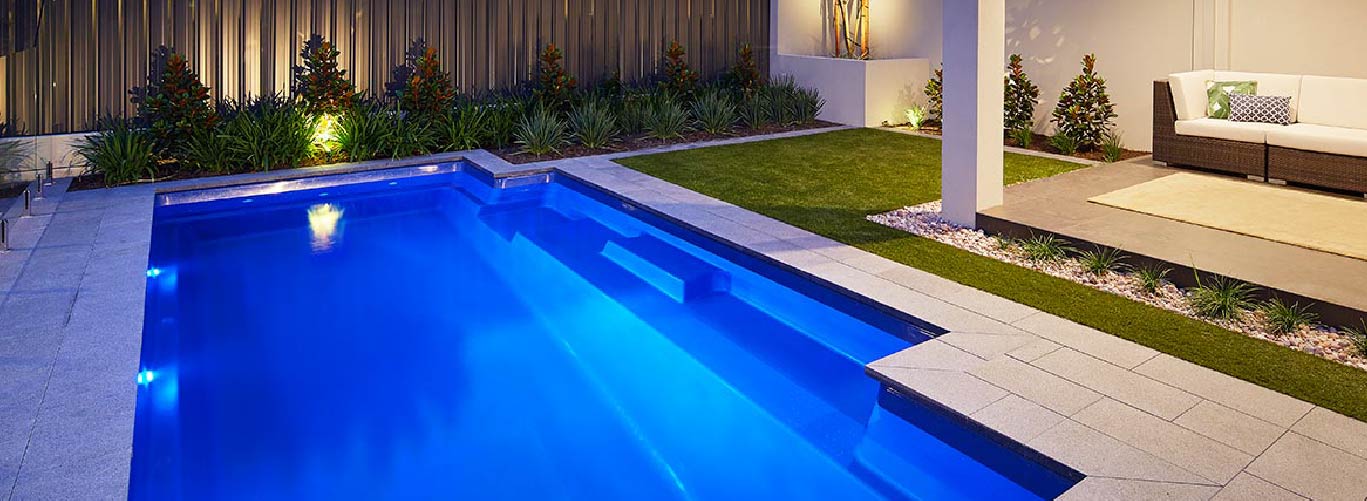How To Spruce Up Your Poolside With Plants
Ahh, the allure of a shimmering pool under the sun – it's not just the jewel of your backyard; it's a resplendent oasis, a centre stage for creating countless memories and a serene spot to unwind after a long day. If your pool area seems to be lacking a certain natural charm, an element that would seamlessly bridge the gap between your aquatic haven and the natural world, then introducing a variety of plants to its perimeter is undoubtedly the next step you should consider. Poolside greenery does much more than merely soften the edges of your aquatic retreat; it transforms the space into a lush sanctuary that not only provides shade and privacy but, with the right mix of plant care and selection, it imbues the area with a year-round vacation vibe, making every moment spent by the pool a luxurious escape from the mundane.

Choosing the Right Plants
In this comprehensive guide, we’re not just going to lead you through the basics; we’ll dive deep into the art and science of choosing, planting, and maintaining the perfect flora to enhance your poolside paradise. From understanding the microclimate of your pool area to selecting plants that thrive in the specific conditions it offers, we’ll cover all the essentials. You’ll learn about the best types of plants that can withstand the splashes of chlorinated water, those that require minimal maintenance yet provide maximum aesthetic appeal, and how to strategically place them to create natural wind barriers or privacy screens. Moreover, we’ll explore the sensory aspect of your poolside garden—how to select plants that will not only look stunning but also fill the air with enchanting fragrances, and perhaps even attract delightful wildlife like hummingbirds and butterflies, adding a vibrant layer of life to your outdoor sanctuary.
Reflecting on Design and Aesthetics
The first step in poolside planting is envisioning the look and feel you’d like to achieve. Do you desire a vibrant, tropical setting with large, dramatic leaves, or would you prefer a more subdued, natural look with native species? Your choice of plants will influence the design of your outdoor space significantly, so it’s important to consider the overall aesthetic.
Considering Maintenance Needs
Beyond aesthetics, practical considerations such as maintenance are crucial. Low-maintenance plants are a boon, particularly around areas where frequent foot traffic can occur. Succulents, for example, rarely need watering and are hardy against sun and salty pool water. Conversely, high-maintenance roses, while beautiful, may require more time and care than you’re prepared to dedicate.
Addressing Watering and Drainage
The inadvertent splash from cannonballs and laps can never be underestimated. That said, pooling water can lead to overwatering and can be detrimental to some plants. Ensuring adequate drainage and selecting plants that can tolerate periods of wetness will mitigate potential problems and keep both your garden and pool in top condition.
Safety First
Don’t overlook safety when choosing plants for the pool area. Spiky, thorny, or toxic plants might not be the best option. Falling flowers and berries can create a slipping hazard as well. Opt for poolside greenery that is safe for both humans and pets.

Popular Poolside Plants
Tropical Oasis Essentials
For those aspiring to the exotic, tropical plants like hibiscus, bird-of-paradise, and palm varieties are the crème de la crème. They infuse the landscape with a heady dose of colour and large, architectural shapes that make every day feel like a holiday.
Ornamental Grasses
The soft rustle of ornamental grasses in the breeze adds a dynamic element to your pool area while requiring minimal care. They are a versatile option, ranging from knee-high to towering varieties, and their feathery plumes offer a sense of privacy without imposing a solid barrier.
Flowering Perennials
Perennials such as lantana, daylilies, and canna lilies introduce seasonal interest with their blooms and a splash of vibrant hues. They are usually hardy plants, offering extended periods of colour with minimal effort, making them perfect for the poolside gardener.
Planting and Maintenance Tips
Selecting the Right Locations
Placement is key. Ensure you’re planting the right plants in the right places. Some may prefer the edge of your pool, enjoying both the sun and the occasional splash, while others thrive in sheltered spots, away from direct sunlight and winds.
Preparing the Soil
Preparation is essential for any successful planting project. Amend the soil with organic matter to ensure it’s well-draining and rich in nutrients. Soil should be installed with a slight decline away from the pool to avoid water runoff into the pool.
Mulching
Mulch not only keeps the soil moist and prevents weed growth but also acts as a buffer for stray pool chemicals that might land near the plantings. Use a non-toxic, organic mulch to nurture the soil and protect your pool’s water quality.
Watering Wisely
Newly planted poolside plants will need a vigilant watering regimen until established. Aim to water them deeply and infrequently, encouraging deep root growth. Additionally, consider installing a drip or soaker system to water more efficiently without water waste or evaporation.

Safety Considerations
Anti-Slip and Pool-Filter Friendly
Anti-slip surfaces are crucial around pool areas, and the choice of ground cover near the pool can play a role in slip reduction. Additionally, plants should not drop leaves or debris that could clog pool filters or interfere with the pool’s operation.
Sun Protection
While humans might seek solace from the sun under the shades of plants, the same may not be true for foliage. Ensure that plants are protected from reflected heat from the pool, as this can be a significant stressor for any plant.
Pruning and Trimming
Regular maintenance, including pruning and trimming, is necessary to keep plants from overhanging the pool, where they can drop leaves or create shady, stagnant areas. Proper maintenance will not only keep the area clean but also reduce the risk of pests and allow for better air circulation.
Conclusion
In conclusion, adding plants to your poolside landscape is an enriching aesthetic choice that brings multiple health and well-being benefits. The process, however, should be approached with consideration for plant choice, safety, maintenance, and environmental impact. By carefully selecting, installing, and maintaining poolside plants, you can create an outdoor haven that thrives alongside the waters of your personal retreat.
By implementing these strategies, you can transform your poolside into a green sanctuary that not only enhances your living space but also connects you to the rhythms of the natural world. Whether you’re an avid gardener or a first-time homeowner, the tips and guidance presented here will serve as your compass to lush, vibrant poolside landscaping.
How To Spruce Up Your Poolside With Plants
Ahh, the allure of a shimmering pool under the sun – it's not just the jewel of your backyard; it's a resplendent oasis, a centre stage for creating countless memories and a serene spot to unwind after a long day. If your pool area seems to be lacking a certain natural charm, an element that would seamlessly bridge the gap between your aquatic haven and the natural world, then introducing a variety of plants to its perimeter is undoubtedly the next step you should consider. Poolside greenery does much more than merely soften the edges of your aquatic retreat; it transforms the space into a lush sanctuary that not only provides shade and privacy but, with the right mix of plant care and selection, it imbues the area with a year-round vacation vibe, making every moment spent by the pool a luxurious escape from the mundane.

Choosing the Right Plants
In this comprehensive guide, we’re not just going to lead you through the basics; we’ll dive deep into the art and science of choosing, planting, and maintaining the perfect flora to enhance your poolside paradise. From understanding the microclimate of your pool area to selecting plants that thrive in the specific conditions it offers, we’ll cover all the essentials. You’ll learn about the best types of plants that can withstand the splashes of chlorinated water, those that require minimal maintenance yet provide maximum aesthetic appeal, and how to strategically place them to create natural wind barriers or privacy screens. Moreover, we’ll explore the sensory aspect of your poolside garden—how to select plants that will not only look stunning but also fill the air with enchanting fragrances, and perhaps even attract delightful wildlife like hummingbirds and butterflies, adding a vibrant layer of life to your outdoor sanctuary.
Reflecting on Design and Aesthetics
The first step in poolside planting is envisioning the look and feel you’d like to achieve. Do you desire a vibrant, tropical setting with large, dramatic leaves, or would you prefer a more subdued, natural look with native species? Your choice of plants will influence the design of your outdoor space significantly, so it’s important to consider the overall aesthetic.
Considering Maintenance Needs
Beyond aesthetics, practical considerations such as maintenance are crucial. Low-maintenance plants are a boon, particularly around areas where frequent foot traffic can occur. Succulents, for example, rarely need watering and are hardy against sun and salty pool water. Conversely, high-maintenance roses, while beautiful, may require more time and care than you’re prepared to dedicate.
Addressing Watering and Drainage
The inadvertent splash from cannonballs and laps can never be underestimated. That said, pooling water can lead to overwatering and can be detrimental to some plants. Ensuring adequate drainage and selecting plants that can tolerate periods of wetness will mitigate potential problems and keep both your garden and pool in top condition.
Safety First
Don’t overlook safety when choosing plants for the pool area. Spiky, thorny, or toxic plants might not be the best option. Falling flowers and berries can create a slipping hazard as well. Opt for poolside greenery that is safe for both humans and pets.

Popular Poolside Plants
Tropical Oasis Essentials
For those aspiring to the exotic, tropical plants like hibiscus, bird-of-paradise, and palm varieties are the crème de la crème. They infuse the landscape with a heady dose of colour and large, architectural shapes that make every day feel like a holiday.
Ornamental Grasses
The soft rustle of ornamental grasses in the breeze adds a dynamic element to your pool area while requiring minimal care. They are a versatile option, ranging from knee-high to towering varieties, and their feathery plumes offer a sense of privacy without imposing a solid barrier.
Flowering Perennials
Perennials such as lantana, daylilies, and canna lilies introduce seasonal interest with their blooms and a splash of vibrant hues. They are usually hardy plants, offering extended periods of colour with minimal effort, making them perfect for the poolside gardener.
Planting and Maintenance Tips
Selecting the Right Locations
Placement is key. Ensure you’re planting the right plants in the right places. Some may prefer the edge of your pool, enjoying both the sun and the occasional splash, while others thrive in sheltered spots, away from direct sunlight and winds.
Preparing the Soil
Preparation is essential for any successful planting project. Amend the soil with organic matter to ensure it’s well-draining and rich in nutrients. Soil should be installed with a slight decline away from the pool to avoid water runoff into the pool.
Mulching
Mulch not only keeps the soil moist and prevents weed growth but also acts as a buffer for stray pool chemicals that might land near the plantings. Use a non-toxic, organic mulch to nurture the soil and protect your pool’s water quality.
Watering Wisely
Newly planted poolside plants will need a vigilant watering regimen until established. Aim to water them deeply and infrequently, encouraging deep root growth. Additionally, consider installing a drip or soaker system to water more efficiently without water waste or evaporation.

Safety Considerations
Anti-Slip and Pool-Filter Friendly
Anti-slip surfaces are crucial around pool areas, and the choice of ground cover near the pool can play a role in slip reduction. Additionally, plants should not drop leaves or debris that could clog pool filters or interfere with the pool’s operation.
Sun Protection
While humans might seek solace from the sun under the shades of plants, the same may not be true for foliage. Ensure that plants are protected from reflected heat from the pool, as this can be a significant stressor for any plant.
Pruning and Trimming
Regular maintenance, including pruning and trimming, is necessary to keep plants from overhanging the pool, where they can drop leaves or create shady, stagnant areas. Proper maintenance will not only keep the area clean but also reduce the risk of pests and allow for better air circulation.
Conclusion
In conclusion, adding plants to your poolside landscape is an enriching aesthetic choice that brings multiple health and well-being benefits. The process, however, should be approached with consideration for plant choice, safety, maintenance, and environmental impact. By carefully selecting, installing, and maintaining poolside plants, you can create an outdoor haven that thrives alongside the waters of your personal retreat.
By implementing these strategies, you can transform your poolside into a green sanctuary that not only enhances your living space but also connects you to the rhythms of the natural world. Whether you’re an avid gardener or a first-time homeowner, the tips and guidance presented here will serve as your compass to lush, vibrant poolside landscaping.



